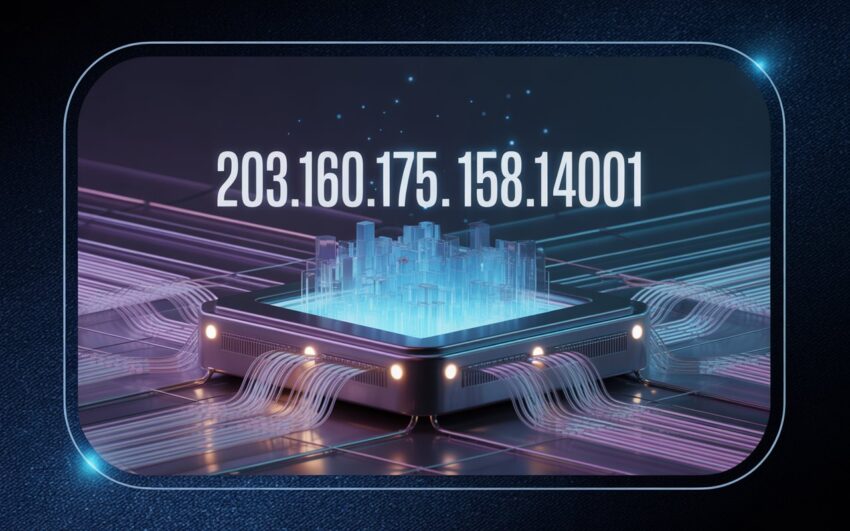Introduction
In today’s hyper-connected digital world, numbers matter. Every device, server, and application that connects to the internet relies on unique identifiers to function. One such identifier is 203.160.175.158.14001, which may look like just a random sequence but actually represents a combination of an IP address and a port number. For cybersecurity experts, IT professionals, and even curious users, understanding these identifiers is vital. In this article, we’ll break down the meaning, uses, benefits, and challenges of 203.160.175.158.14001, along with strategies and insights that can help readers better navigate the complexities of networking and online security.
What is 203.160.175.158.14001?
At its core, 203.160.175.158.14001 combines two critical elements of the internet’s backbone:
- 203.160.175.158 – The IP Address
- This is a unique numerical label assigned to a device on a network.
- It ensures data packets know where to travel and where to return.
- In this case, the address follows the IPv4 format (four sets of numbers separated by dots).
- 14001 – The Port Number
- A port number allows devices to differentiate between multiple services running on the same IP.
- Think of the IP as a street address and the port as an apartment number.
- Common examples include port 80 (HTTP) or port 443 (HTTPS).
So, when you see 203.160.175.158.14001, you’re essentially looking at an IP:Port combination, used to identify and connect to a specific service on a specific server.
Importance of 203.160.175.158.14001
Why should we care about such a string of numbers? The significance of 203.160.175.158.14001 lies in:
- Network Communication – It allows seamless exchange of data between clients and servers.
- Application Hosting – Services like web apps, games, or databases may be hosted on specific ports tied to an IP.
- Security Monitoring – Cybersecurity professionals track IP:Port combinations like 203.160.175.158.14001 to detect unusual or malicious activity.
- Remote Access – Admins often use unique port numbers to securely access remote servers or services.
Without identifiers like this, our digital systems would collapse into chaos, unable to distinguish one service from another.
Real-World Applications of 203.160.175.158.14001
1. Web Servers and Applications
A company might run multiple applications on the same server. By assigning different ports, such as 203.160.175.158.14001, users can access a particular app without interfering with others.
2. Database Management
Databases like MySQL or PostgreSQL often run on unique ports. A port such as 14001 can be customized for added security and easier monitoring.
3. Remote Work and VPNs
Remote employees connect to company networks via IP:Port combinations. 203.160.175.158.14001 could represent a secure entry point into private systems.
4. Cybersecurity Research
Ethical hackers and security teams constantly analyze IP:Port activity. Identifiers like 203.160.175.158.14001 may reveal vulnerabilities or unauthorized access attempts.
Common Mistakes and Challenges
Even though IP and port combinations are critical, many users misuse or misunderstand them. Here are common pitfalls with 203.160.175.158.14001:
- Leaving Ports Open
Open ports are like unlocked doors to hackers. Failing to secure ports can lead to unauthorized access. - Weak Firewall Configurations
Not restricting access to 203.160.175.158.14001 with firewalls may expose sensitive services. - Relying on Default Ports
Using predictable ports (e.g., 80, 443) instead of unique numbers like 14001 makes services easier to target. - Poor Documentation
IT teams sometimes forget to document which service runs on which port. This leads to confusion and troubleshooting delays. - Overlooking Updates
Outdated software running on 203.160.175.158.14001 can create vulnerabilities hackers exploit.
Strategies for Using 203.160.175.158.14001 Safely
If you’re an administrator or even a curious user experimenting with networking, here are actionable strategies:
- Secure with Firewalls
Configure firewall rules to restrict access to 203.160.175.158.14001 only from trusted sources. - Use VPN Tunnels
Protect connections by requiring VPN access before anyone can use the port. - Regularly Monitor Logs
Track all incoming and outgoing traffic to spot unusual activity early. - Change Default Ports
While 14001 is already non-standard, periodically rotating ports reduces predictability. - Encrypt Connections
Always pair port usage with encryption protocols (SSL/TLS) to protect sensitive data.
Future Trends for 203.160.175.158.14001 and Similar IP:Port Identifiers
As networking evolves, identifiers like 203.160.175.158.14001 will continue to play crucial roles. Key trends include:
- IPv6 Expansion
With IPv4 running out of addresses, IPv6 adoption will change how IP:Port combinations appear. - Zero Trust Security
Future security models will assume all ports, including 203.160.175.158.14001, are potential threats unless verified. - Automation in Monitoring
AI-powered tools will automatically scan for unusual traffic across specific ports. - Increased Customization
More organizations will assign unique ports like 14001 for added security. - Integration with IoT
As billions of devices connect online, identifiers like 203.160.175.158.14001 will become even more common in managing IoT traffic.
FAQ: 203.160.175.158.14001
Q1: What does 203.160.175.158.14001 represent?
It’s an IP address (203.160.175.158) paired with a port number (14001), used to identify and access a specific service on a server.
Q2: Is 203.160.175.158.14001 safe to use?
It depends on how it’s configured. If secured with firewalls and encryption, it can be safe. If left open, it may be vulnerable.
Q3: Can I access 203.160.175.158.14001 directly?
Only if the service owner allows external access. Otherwise, it may be blocked for security reasons.
Q4: Why use port 14001 instead of a standard port?
Non-standard ports like 14001 help reduce automated attacks that target common ports (e.g., 80, 443).
Q5: How do businesses benefit from 203.160.175.158.14001?
They can run unique applications, secure remote access, and manage services more effectively using customized IP:Port configurations.
Conclusion
In the vast world of networking, identifiers like 203.160.175.158.14001 may seem like random numbers, but they are foundational to how the internet operates. By combining an IP address with a port, they enable specific services to run securely and efficiently.
For professionals, understanding 203.160.175.158.14001 means learning how to manage, secure, and monitor digital environments. For everyday users, it’s a reminder that every online interaction relies on these unseen building blocks. As the internet continues to expand, knowing the role and risks of such identifiers will remain a vital skill for anyone navigating the digital landscape.
